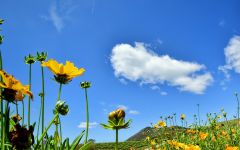Qupe Santa Barbara County Syrah (375ML half-bottle) 2012
-
Wine
Enthusiast


Product Details
Your Rating
Somm Note
Winemaker Notes
Professional Ratings
-
Wine Enthusiast
Plump boysenberry and dewy sagebrush meet with a touch of wet asphalt on the nose of this bottling by Bob Lindquist, whose pioneering brand is now part of Charles Banks' portfolio. Dark purple fruits, from blueberry to blackberry, show on the palate, but with refreshing tartness, as do more complex nuances of menthol, eucalyptus and incense.




In contrast to the Old World, Qupé focuses on cool climate expressions of Rhône varietals due to a distinctive geographical feature that sets them apart from most other regions of California, as all vineyards are all located in East-West valleys (vs North-South) which function as open windows to the cool Pacific Ocean. The benefit to the vineyards of being along the coast and running East-West is that the cold, moist air gets pulled in and creates a layer of morning cloud cover over the vines which reduces temperatures and sun exposure on the grapes. This is why cool climate varieties excel in the coastal regions of the Central Coast and allows Qupé to focus on cool climate expressions of Rhone varietals. East-West valleys on the Central Coast that Qupé sources from include Edna Valley, Arroyo Grande Valley, Santa Maria Valley, Los Alamos Valley and Santa Rita Hills/Santa Ynez Valley.
The name "qupé" was chosen to honor the Chumash, the indigenous people of the Golden State's Central Coast and Channel Islands. In Chumash, "qupé" refers to the poppy, a flowering plant traditionally used for food and medicine. In 1903 the California poppy (Eschscholzia californica) was officially designated the state flower, and every spring masses of the bright orange blossoms still blanket local hills and back country.

Marked by an unmistakable deep purple hue and savory aromatics, Syrah makes an intense, powerful and often age-worthy red. Native to the Northern Rhône, Syrah achieves its maximum potential in the steep village of Hermitage and plays an important component in the Red Rhône Blends of the south, adding color and structure to Grenache and Mourvèdre. Syrah is the most widely planted grape of Australia and is important in California and Washington. Sommelier Secret—Such a synergy these three create together, the Grenache, Syrah, Mourvedre trio often takes on the shorthand term, “GSM.”

With a dry and mild climate cooled significantly by moist ocean fog and breezes, Santa Barbara County is a grape-grower’s dream. Part of the larger Central Coast appellation, Santa Barbara is home to Santa Maria Valley and Santa Ynez Valley. The conditions here provide an opportunity for nearly effortless production of high-quality cool-climate Central Coast wines. This is also the site of the 2004 film Sideways, which caused Pinot Noir’s popularity to skyrocket and brought new acclaim to the region.
Chardonnay and Pinot Noir are the stars of Santa Barbara, producing wines marked by racy acidity. Crisp Sauvignon Blanc and savory Syrah are also important. The region is home to many young and enthusiastic winemakers eager to experiment with less common varieties including Chenin Blanc, Grüner Veltliner, Trousseau Gris, Gamay and Cabernet Franc, making it an exciting area to watch.
